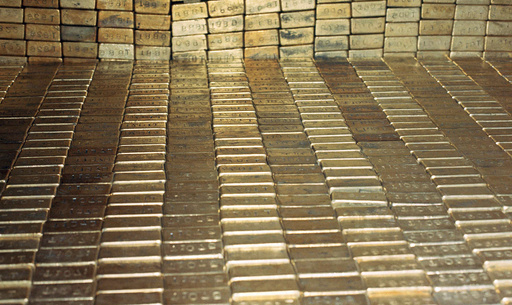LOUISVILLE, Ky. — President Donald Trump recently mentioned that Elon Musk will be examining Fort Knox, the iconic gold depository located in Kentucky, to verify the presence of the gold reserves stored there.
According to Treasury Secretary Scott Bessent, there is an annual audit conducted to ensure that “all the gold is present and accounted for.” Established in 1937, the United States Bullion Depository at Fort Knox has garnered a reputation for its exceptional security in safeguarding the nation’s precious metal bullion reserves. In addition to its primary function of protecting gold, Fort Knox also serves as the headquarters for the Army’s human resources command and is the site of the Army’s largest annual training event held every summer.
During a speech aimed at Republican governors, Trump stated, “We’re going to open up the doors. We’re going to inspect Fort Knox,” expressing his desire to ensure that the facility is not empty. “I don’t want to open it and the cupboards are bare,” he added, highlighting the importance of transparency regarding the gold reserves.
Located approximately 35 miles south of Louisville, Fort Knox spans over 109,000 acres across three Kentucky counties: Bullitt, Hardin, and Mead. Initially established as Camp Knox during World War I, it became an artillery training center before being designated as a permanent installation known as Fort Knox in 1932. The first shipment of gold arrived at Fort Knox in 1937, guarded by the 1st Cavalry Regiment.
During World War II, the Army expanded the Armored Force at Fort Knox, training thousands of soldiers in tank operations, which solidified the post’s legacy as the “Home of Cavalry and Armor.” However, in 2005, the Army transitioned the Armor Center and School to Fort Benning, Georgia, and subsequently established the Human Resource Command Center of Excellence at Fort Knox. By 2013, the ROTC Cadet Summer Training was consolidated at the Fort, which continues to host the Army’s most significant annual training event.
As for the gold stored at Fort Knox, the U.S. Mint reports that there are currently 147.3 million ounces held in the depository, with approximately half of the Treasury’s gold stored there. Historically, only minimal quantities have been removed for testing purity during scheduled audits, and aside from these samples, there has been no transfer of gold in many years. The gold is valued at $42.22 per ounce on paper.
Fort Knox is renowned for its stringent security measures, with details about the facility and its operations known only to a select few. The construction of the facility in 1936 utilized 16,000 cubic feet of granite, 4,200 cubic yards of concrete, 750 tons of reinforcing steel, and 670 tons of structural steel, making it exceptionally fortified. Access to the vault has been highly restricted, allowing only three visits to the facility over the years.
In the past, journalists and a congressional delegation were permitted to view the gold reserves in 1974, following rumors of potential gold depletion. This visit was authorized by the Treasury secretary and marked the first time anyone outside of essential personnel, aside from President Franklin D. Roosevelt, had access to the vault. The vault was opened again in 2017 when Treasury Secretary Steve Mnuchin visited alongside Kentucky Governor Matt Bevin and members of Congress. Current Treasury Secretary Scott Bessent has indicated he would be willing to facilitate a visit for any interested senator.
Fort Knox’s reputation for impenetrability has permeated popular culture, inspiring references in various media. For instance, a Looney Tunes cartoon from 1952 featured Bugs Bunny and Yosemite Sam searching for gold at Fort Knox. Additionally, the depository has been incorporated into the storylines of films such as the 1964 James Bond classic “Goldfinger” and the 1981 comedy “Stripes,” which included scenes filmed at the military installation.




